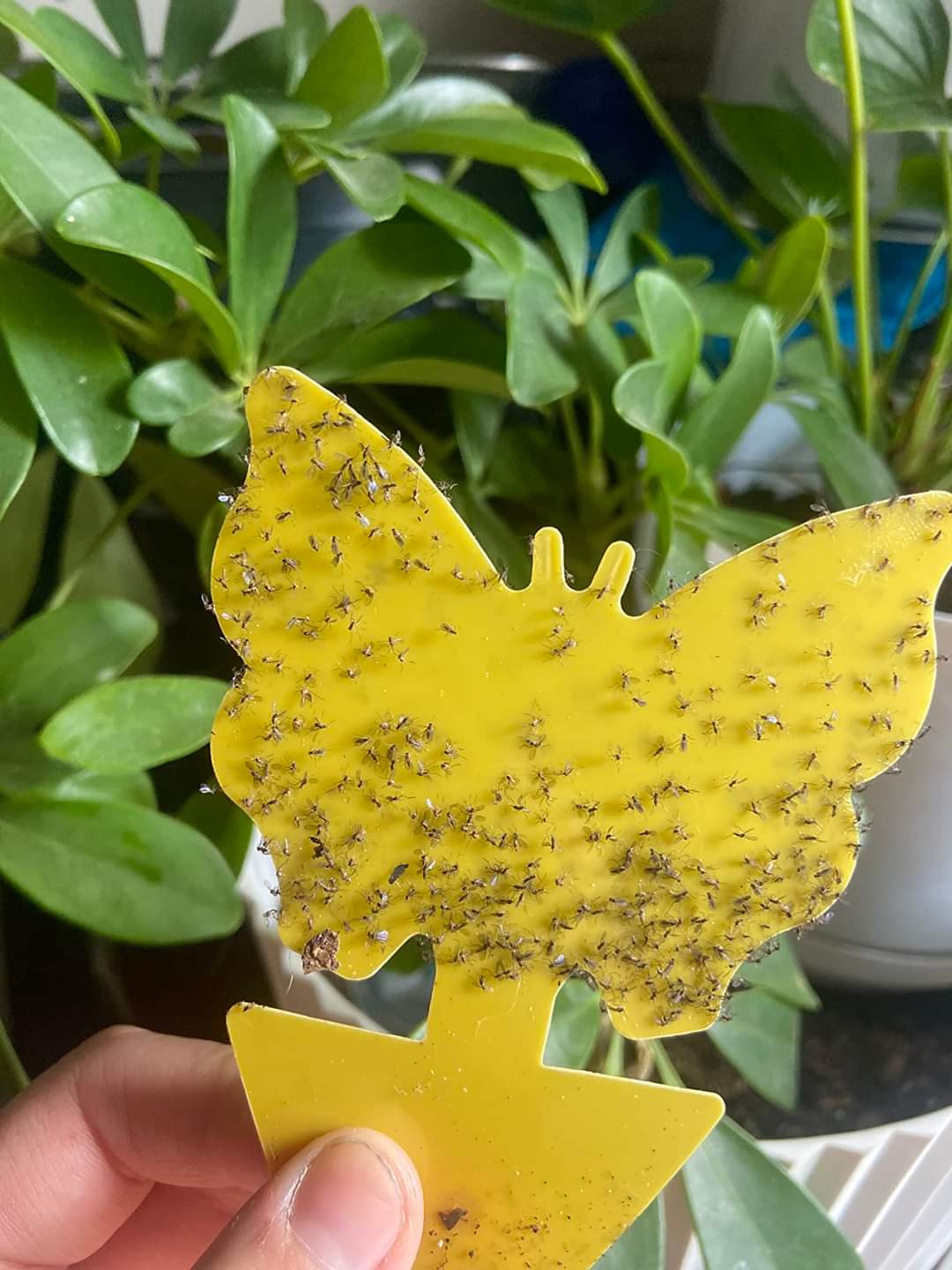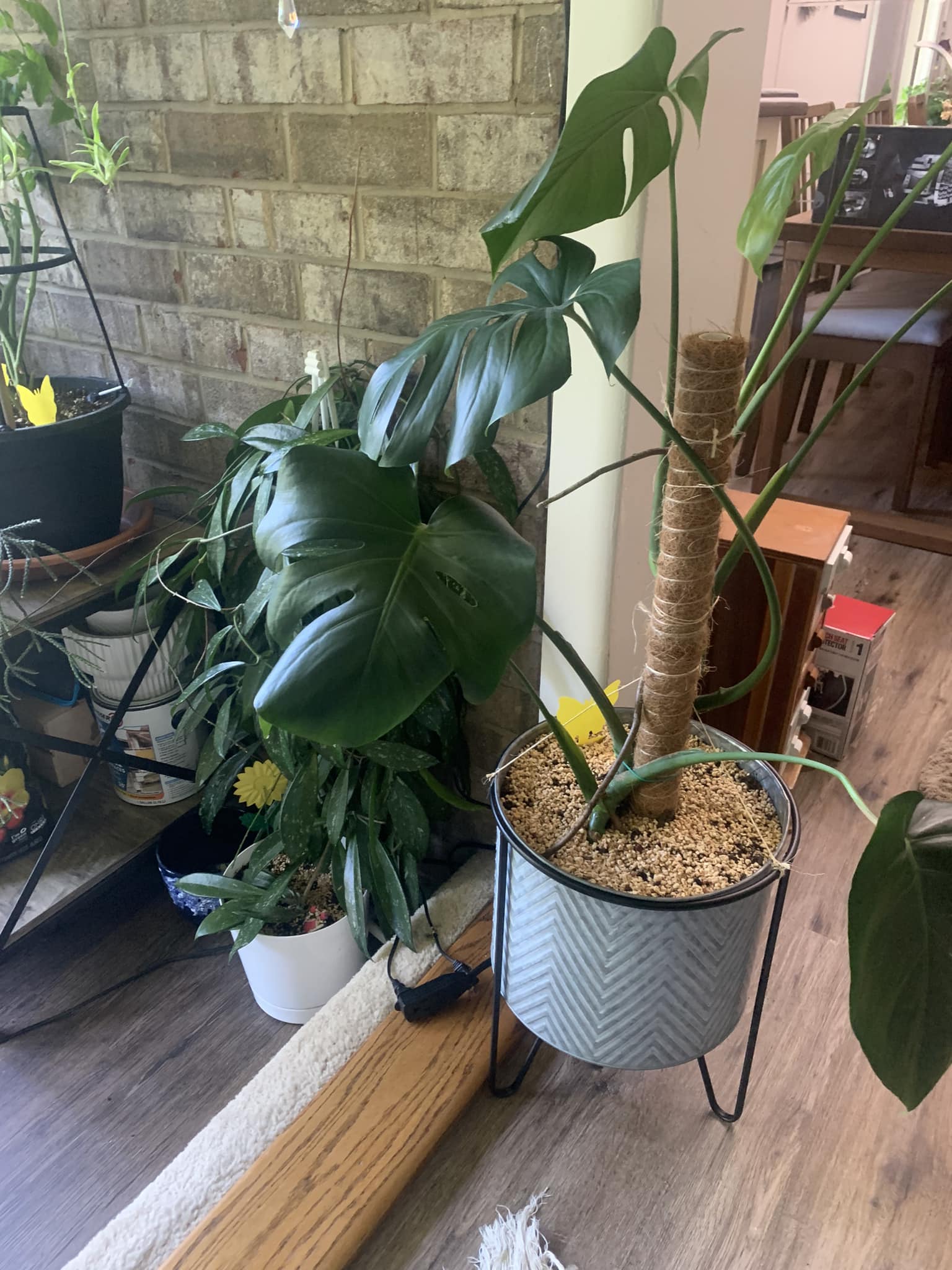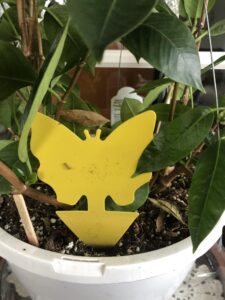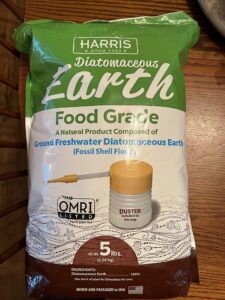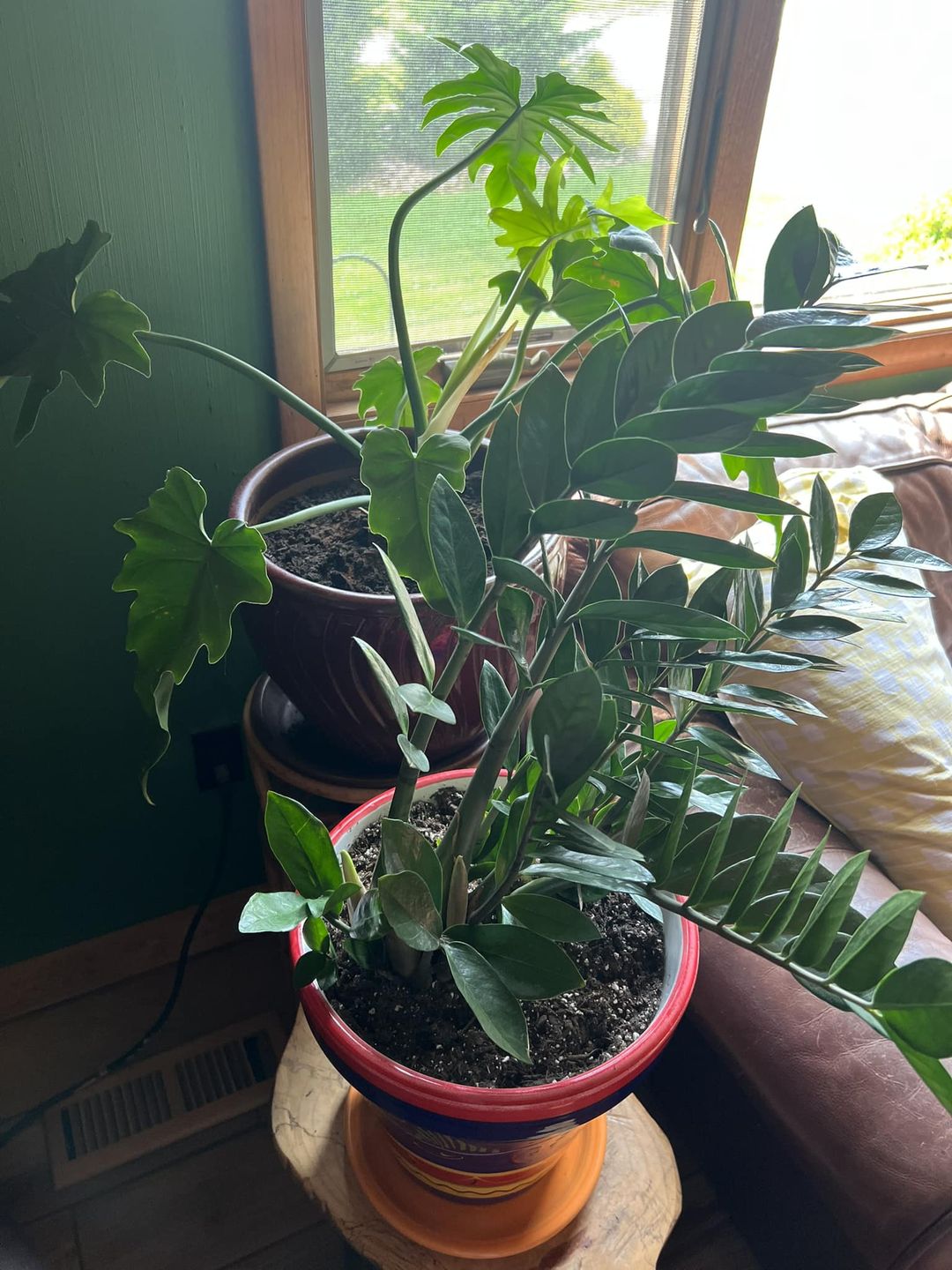We plant houseplants for their beauty and ability to effortlessly transform our living spaces into dazzling, welcoming spaces. They also purify the air Indoors and create a soothing and relaxing environment.
Unfortunately, fungus gnats love these plants, and while they are not destructive, they are pretty annoying.
Imagine working hard to create a stunning display of houseplants only for it to be ruined by fungus gnats swarming around them. That is quite disheartening.
I’ve got good news for you, though: you can eliminate these little annoying flies. You just need to know how. In that case, keep reading to learn the best ways of getting rid of fungus gnats in houseplants.
What Causes Fungus Gnats In Houseplants?
You can avoid the things that attract fungus gnats to your houseplants if you know what they are. So, here are the causes of fungus gnats in houseplants.
1) Overwatering
Overwatering houseplants, especially succulents, is a big no-no as it causes many problems, including attracting fungus gnats. Excessively watering your houseplants leads to soil waterlogging, and the excess moisture allows fungus gnat larvae to thrive and feed on decaying organic matter present in the soil.
2) Presence Of Organic Matter In The Soil
Fungus gnat larvae must feed to grow, develop, and reach maturity. The population of pests will significantly increase with the presence of organic matter. Their larvae will feed on decaying organic material, such as dead plant roots, decomposing leaves, and algae, found in the soil.
But how does organic matter accumulate in the soil? When old leaves, flowers, or stems die and fall into the pot, they can decompose and become a food source for fungus gnat larvae.
Also, excess water in the soil can lead to root rot and the decay of plant roots, providing a nutrient-rich environment for fungus gnat larvae.
Your potting mixes can also contribute to increased organic matter. Some potting mixes are formulated with plenty of organic material, like peat moss, compost, or bark.
3) Poor Drainage
Another significant contributor to the fungus gnats population is poor drainage. If you plant your houseplants in pots with poor drainage, excess water cannot escape, leading to soggy conditions.
This creates an ideal environment for fungus gnats to thrive, as the moisture-rich soil provides a suitable breeding ground for their larvae.
Poor drainage and waterlogged soil can create a higher humidity level, contributing to the overall attraction for fungus gnats.
4) Infested Plant Material
You risk introducing fungus gnats into your indoor garden by bringing in new plants or using contaminated potting soil that already contains fungus gnat eggs, larvae, or pupae.
The infestation could persist and spread to other plants if you did not effectively deal with previous fungus gnats infestations.
Related Post: Why Does My Spider Plant Have Brown Tips?
5) High Humidity
Fungus gnats thrive in moist environments, and elevated humidity levels provide the ideal conditions for their development and reproduction. Humid air around your plants keeps the soil damp for longer, creating a suitable habitat for fungus gnat larvae and attracting adult gnats.
6) Lack of Air Circulation
Proper air circulation helps maintain a healthy indoor garden by helping regulate humidity levels, prevent stagnant conditions, and deter the development of fungus gnat infestations. Therefore, the absence of it can contribute to fungus gnat problems.
Related Posts:
- Fruits And Vegetables You Can Grow Indoors
- How To Get Rid Of Spider Mites On Plants
- Plants That Don’t Need Much Sunlight
- Why do house plants get brown tips on their leaves
How To Get Rid Of Fungus Gnats In Houseplants Naturally
Here are natural and effective methods to eliminate fungus gnats.
1. Let The Soil Dry
Deal with fungus gnats larvae and eggs by not watering your houseplants for many days. Dry soil creates unfavorable conditions for moles’ development and breaks their life cycle. Furthermore, ensure your runoff saucers don’t have standing water.
Also, consider using a sterile potting mix since it lacks sufficient organic matter for fungus gnats larvae to consume.
2. Use Sticky Traps
Sticky traps will help you easily kill adult fungus gnats. These traps feature blue or yellow cards with sticky material. The trap’s color draws in the adult gnats while the adhesive surface traps them.
Increase your chances of success by placing the sticky traps near your plants, preferably at the soil level or slightly above. Also, give the sticky traps sufficient time to trap the fungus gnats- this means leaving them for a few days to a week.
Once a trap is full of gnats, replace them. If you aren’t sure about using sticky traps, here are a few advantages- sticky traps are non-toxic, easy to use, target adult fungus gnats, and help you monitor the infestation severity.
3. Try Cinnamon Powder
Cinnamon’s antifungal and antimicrobial properties deter adult gnats and prevent egg-laying in the soil. This natural and commonly used fungus gnats remedy is safe and non-toxic, making it an attractive option for households with children and pets.
Your home will also smell heavenly, so you get more than just eliminating these pests. Sprinkle some cinnamon powder on the soil surface of your houseplants, then monitor your houseplants for a few days.
4. Diatomaceous Earth
Like cinnamon powder, spread Diatomaceous Earth to your houseplants’ soil, concentrating on the areas fungus gnats are active, typically around the base of the plant. Diatomaceous Earth physically damages the exoskeletons of insects, including fungus gnats, leading to dehydration and death.
5. Beneficial Nematodes
The upside of using these microscopic roundworms is that they do not harm plants, humans, or other beneficial organisms but are parasitic to harmful insects, including fungus gnat larvae.
If you choose this safe and eco-friendly option to manage fungus gnats in your houseplants, buy beneficial nematodes that specifically target fungus gnat larvae. These include Steinernema feltiae and Steinernema carpocapsae.
6. Use Hydrogen Peroxide
Hydrogen peroxide releases oxygen when it comes into contact with the soil. The increased oxygen levels create a more hostile environment for fungus gnat larvae since they prefer low-oxygen conditions.
Here’s how to use hydrogen peroxide to control fungus gnats.
- Mix 3% hydrogen peroxide with water in a ratio of 1:4 ratio. For example, use 4 cups of water with 1 cup of hydrogen peroxide.
- Pour the solution directly onto the soil until it is well saturated.
- After applying the hydrogen peroxide solution, water only when the soil is dry.
- Repeat the application as Necessary.
7. Try Neem Oil
You can use neem oil as a preventive and curative treatment against fungus gnats. This natural substance contains compounds that act as insecticides, fungicides, and repellents.
Follow this procedure to use it:
- Mix neem oil with water, typically about 1 to 2 teaspoons of neem oil per liter of water.
- Pour the neem oil solution into a spray bottle and thoroughly spray the soil surface and foliage of the infested plants, ensuring you cover all affected areas.
- Repeat the treatment if necessary.
8. Bacillus thuringiensis israelensis (BTI)
Bacillus thuringiensis israelensis (BTI) is a natural and highly effective biological control agent used to manage fungus gnats and mosquito larvae in various settings, including houseplants. BTI is a soil-dwelling bacterium that produces toxins specific to the larvae of certain insects, including fungus gnats.
You can buy BTI in granules or soluble drenches. Mix the BTI product with water and then water the plants with the solution.
9. Make Apple Cider Vinegar Trap
Pour dish soap (a drop) and apple cider vinegar into a shallow container. The vinegar lures the gnats while the soap breaks the solution’s surface tension, causing the gnats to drown.
Natural Ways to Prevent Gnats in Your Houseplants
To avoid re-infestation and having to deal with these pesky flies over and over, adopt natural prevention strategies.
i) Moisture Control
We have established that fungus gnats flourish in moist environments, so avoid overwatering your houseplants. Reduce the watering frequency, watering only when the soil is dry.
Do so by checking the moisture level before watering, using pots with proper drainage, planting in a well-draining potting mix, and bottom watering.
Also, empty saucers or trays under pots to prevent water from collecting and ensure proper air circulation.
ii) Increase Airflow
Fungus gnats will have a hard time flying around and landing on your houseplants if you create turbulence in the air. Therefore, place a fan near your plants or increase airflow in the room. Increased airflow also helps dry the soil more quickly after watering, reducing the gnats’ preferred breeding conditions.
Moreover, ensure your home is adequately ventilated to control humidity levels.
iii) Keep A Clean Home
You already know that fungus gnats thrive in decaying organic matter, so remove dead leaves, flowers, or other debris from the soil surface. Also, Wipe down surfaces around your houseplants regularly to remove dust and grime that can attract gnats. Additionally, make sure to clean any saucers or trays used to catch excess water from watering.
iv) Inspect New Plants
Before bringing new plants into your home, carefully inspect the soil and plant for any signs of fungus gnats, including tiny black flies hovering around the plant. Also, consider quarantining new plants for a few weeks in a separate area to monitor them for any signs of infestation before placing them near your other houseplants.
Conclusion
As you can see, you can drive fungus gnats away from your houseplants in multiple natural ways. Choose the ones that suit your situation best, considering the infestation severity. You may also need to combine various methods to increase the chances of completely eliminating these flies.

Hey there, fellow plant enthusiasts! I’m Rachel, the green-thumbed writer behind Rooted In Garden. With a deep-rooted love for all things botanical, I’ve made it my mission to help you cultivate a thriving collection of houseplants. As a devoted plant parent myself, I understand the joys and challenges that come with nurturing these leafy wonders. Whether you’re a succulent aficionado, an orchid enthusiast, or simply adore all potted flora, join me on this journey as we explore the secrets to growing and caring for our beloved green companions. Together, let’s create a flourishing oasis indoors.

